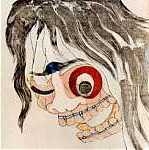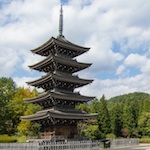I'm a devotee of Japanese policy papers, especially those which relate to engaging with foreigners in some capacity. Consequently, I was drawn to a new report issued by the Kansai Economic Federation (Kankeiren) which looks at the state of Japan's live entertainment market and how to make it more appealing to overseas visitors. You can find the 42 page report here (Japanese PDF) and a separate 47 page appendix here (Japanese PDF).
"Live entertainment" broadly speaking means amusement parks, theatre, and music as well as public events like matsuri. We're not talking about clubs, bars or naked sushi. A large part of the report looks at current trends in tourism and the attitudes of visiting tourists to Japan's offerings. Western tourists often talk about their interest in traditional Japan but it soon becomes apparent that tourists from Asia are far more important in terms of both numbers and spending power and their primary interests are shopping, onsen and eating. There's far too much to translate but here's a quick summary of the reactions they reported after asking tourists what they think of the live entertainment on offer:
Koreans:
While there's a close cultural affinity to certain types of traditional entertainment, the language barrier means something like bunraku is incomprehensible. Of all the art forms, kabuki might be interesting if there was more explanation and information available. Most people didn't seem to know about local festivals but might participate if there was more information. Takarazuka was also unfamiliar but looked glamorous. Young Koreans like manga, anime and fashion and visited Japan to see those aspects.
Taiwanese:
They are aware of Noh and Kabuki but interest is low. If there was a good place to see easy-to-understand examples of everything together, it could be popular. Matsuri might be worth attending if the festivals happen to be on but not worth a special trip. Takarazuka looks interesting. Guys think ninja are cool. The US is too far to go for a theme park so Universal Studios in Osaka is a reasonable substitute. Taiwanese are not just here for the shopping & food, they'd like some traditional Japan options.
Mainland Chinese:
Come in tour groups (many can't get visas otherwise). Get most of their information from tour guides. Kyoto is for sightseeing, Osaka is for shopping. More interested in modern day Japan than historical Japan. There's no kabuki or noh in China so both are intriguing but the language barrier is too high. Festivals might be a nice option to have but not a major reason to visit. Takarazuka looks similar in parts to Beijing Opera so might have some room to appeal.
Hong Kong:
Come for the food. Kabuki & noh might appeal if they could understand them but they don't. It's common to see Beijing Opera or song and dance in Hong Kong as part of a dinner show so maybe that format would be attractive. Feel there's very little information about traditional Japanese entertainment. Toei Kyoto Studio Park is popular because films & samurai dramas are shown in HK. Don't visit Universal Studios Japan because many have seen the real thing in the US. Feel there aren't enough places to go at night.
North Americans:
Rarely come in groups. Get a lot of information from the net and don't like to feel rushed when they visit. Don't know the historical context for kabuki and noh performances so can't enjoy them. Might like some short, late shows (10:00 - 11:00pm) if they were on. Festivals sound interesting, especially if they involve activities where everyone can take part. There don't seem to a lot to do at night.
Europeans:
Come on their own and use guide books and the internet for information. Strong interest in everyday Japanese life. There's a language barrier in kabuki, noh and bunraku and the performances go on too long. Would quite like to see a show after dinner.
The thing about a report such as this in Japan is that conclusions rarely follow on from the research. Instead, you can tell from the off that the Kankeiren had already decided to promote the idea of short variety shows featuring geisha, ninja, matsuri and Takarazuka and posed their questions accordingly. What's also clear is that Kansai feels it has been the birthplace to a lot of cultural art forms which resonate with foreigners but the current formats hold little or no appeal. They are also aware that modern theatre shows can have be very popular and talk slightly enviously about Korea's long running Nanta, which has played to audiences overseas:
[YThd]0XQ-hFrhE_Q[/YThd]
Another Korean international success is JUMP:
[YThd]LAd5rxOzv4I[/YThd]
It seem pretty clear, then, that we should look out for a few more touristy offerings in Japan's theatres and theme parks in the future. Whether it'll be dumbed-down kabuki or slapstick bonsai is as yet unclear.
| Hot Topics | |
|---|---|
Geisha & Ninja Shows Proposed As Tourist Attraction
11 posts
• Page 1 of 1
-

Mulboyne - Posts: 18608
- Joined: Thu May 06, 2004 1:39 pm
- Location: London
I've been dragged to noh and bunraku once. It is a real battle as which is more mindnumbingly boring.
On another note, my bet is that Koreans would really get into some of the more violent Matsuris especially if it gave them an opportunity to hit Japanese.
On another note, my bet is that Koreans would really get into some of the more violent Matsuris especially if it gave them an opportunity to hit Japanese.
-

dimwit - Maezumo
- Posts: 3827
- Images: 3
- Joined: Tue Jun 01, 2004 11:29 pm
Ninja Shows
Dunno what Ninja shows they have in mind, but I once visited one in Nara-prefecture with a guy hacking objects in half with his Samurai sword and throwing stars, and it was quite fun.
As for Noh and Kabuki, these must be F boring, and I didn't even need to visit them to figure that out.
Somewhere halfway between boring and interesting are these Japanese drum shows. As long as they are time-limited, they should be an attraction to many.
As for Noh and Kabuki, these must be F boring, and I didn't even need to visit them to figure that out.
Somewhere halfway between boring and interesting are these Japanese drum shows. As long as they are time-limited, they should be an attraction to many.
-

Russell - Maezumo
- Posts: 8580
- Images: 1
- Joined: Fri Aug 13, 2010 11:51 pm
Russell wrote:Dunno what Ninja shows they have in mind, but I once visited one in Nara-prefecture with a guy hacking objects in half with his Samurai sword and throwing stars, and it was quite fun.
As for Noh and Kabuki, these must be F boring, and I didn't even need to visit them to figure that out.
Somewhere halfway between boring and interesting are these Japanese drum shows. As long as they are time-limited, they should be an attraction to many.
I love kabiki, but Noh is a piece of shit.
I'd handle the ninja stuff if they don't get into boring speeches about the bullshit meaning behind it all.
Je pète dans votre direction générale
 8O8O8O8O8O
8O8O8O8O8O
Tiocfaidh ar la
Tiocfaidh ar la
-

Screwed-down Hairdo - Maezumo
- Posts: 6721
- Joined: Wed May 20, 2009 7:03 pm
The one time I saw kabuki at the Kabukiza I really enjoyed (Of course I grew up NY watching off- and off-off-Broadway productions). I did have the head phones with the running commentary in English though. Without those, I probably would have got bored. I had mixed feelings though because it made it hard to listen to the performance.
Faith is believing what you know ain't so. -- Mark Twain
-

Samurai_Jerk - Maezumo
- Posts: 14387
- Joined: Mon Feb 09, 2004 7:11 am
- Location: Tokyo
Russell wrote:Dunno what Ninja shows they have in mind, but I once visited one in Nara-prefecture with a guy hacking objects in half with his Samurai sword and throwing stars, and it was quite fun. . . .
Wouldn't a properly run ninja show be invisible by definition.
Never criticize anyone until you've walked several kilometres in their shoes.
Because
1. You're now several kilometres away; and
2. You've got their shoes.
Because
1. You're now several kilometres away; and
2. You've got their shoes.
-

Typhoon - Maezumo
- Posts: 778
- Joined: Mon Dec 12, 2005 6:26 am
I totally agree with the pro-Kabuki camp.
It really can be engrossing if you can get a handle on what's going on. I found the English-language earphone guide to be good, but the Japanese one is even better if you can understand the language (the fact that there's a Japanese-language earphone guide is telling in itself). The Japanese guide explains the historical background of what's happening on stage "in it's native context," so to speak, and at least one of the Japanese narrators (male) is really, really good at it. You can learn quite a lot about Japanese culture that way, while enjoying a good show at the same time.
It really can be engrossing if you can get a handle on what's going on. I found the English-language earphone guide to be good, but the Japanese one is even better if you can understand the language (the fact that there's a Japanese-language earphone guide is telling in itself). The Japanese guide explains the historical background of what's happening on stage "in it's native context," so to speak, and at least one of the Japanese narrators (male) is really, really good at it. You can learn quite a lot about Japanese culture that way, while enjoying a good show at the same time.
_/_/_/ Phmeh ... _/_/_/
-

Yokohammer - Posts: 5090
- Joined: Tue Sep 30, 2008 6:41 pm
- Location: South of Sendai
And now we have a concrete proposal on the table.
Kankeiren came up with a 30 minute programme to introduce aspects of Japanese culture. It was given a trial run-out at the Rihga Royal Hotel in Osaka in front of a selected audience of travel & tourism industry representatives. It featured taiko drumming, ninja fights, Japanese dance and oiran (courtesans). Including oiran is probably a smart idea because they look more showy and glamorous than geisha. The theme of the show - you'll like this - is the four seasons.
It apparently crams quite a lot in over 30 minutes, just in case anyone starts dropping off. The focus is on the visuals to minimize any language barrier. One Chinese travel agent said it would be a must-visit for his clients if tickets were around 2,000 yen. That's a possible price level because Kankeiren decided that the programme needs to be cheap, short and easy to understand.
Kankeiren came up with a 30 minute programme to introduce aspects of Japanese culture. It was given a trial run-out at the Rihga Royal Hotel in Osaka in front of a selected audience of travel & tourism industry representatives. It featured taiko drumming, ninja fights, Japanese dance and oiran (courtesans). Including oiran is probably a smart idea because they look more showy and glamorous than geisha. The theme of the show - you'll like this - is the four seasons.
It apparently crams quite a lot in over 30 minutes, just in case anyone starts dropping off. The focus is on the visuals to minimize any language barrier. One Chinese travel agent said it would be a must-visit for his clients if tickets were around 2,000 yen. That's a possible price level because Kankeiren decided that the programme needs to be cheap, short and easy to understand.
-

Mulboyne - Posts: 18608
- Joined: Thu May 06, 2004 1:39 pm
- Location: London
Yokohammer wrote:I totally agree with the pro-Kabuki camp.
It really can be engrossing if you can get a handle on what's going on.
Put me in the pro-kabuki camp too. Even just reading a synopsis of the story helps a lot.
Since currently there are no working ninja or oiran, that part sounds bogus. But although their business is down there are still working geisha, so it might be fun to see them do a little Nihon Buyou, and finish the show off with a demo of their guest participation group dancing and a few geisha party games.
[font="Trebuchet MS"][SIZE="1"]Believe nothing, no matter where you read it or who has said it, not even if I have said it, unless it agrees with your own reason and your own common sense.
- Gautama the Buddha[/SIZE][/font]
- Gautama the Buddha[/SIZE][/font]
-

Dragonette - Maezumo
- Posts: 280
- Joined: Wed Dec 19, 2007 12:51 am
- Location: New York City
Glad this thread popped up again...of all the traditional Japanese cultures, kabuki is the second coolest (After the prostitutes in the windows of the pleasure districts, but you can't really go selling your cuntry on that sort of thing unless you're Dutch). Love it.
Je pète dans votre direction générale
 8O8O8O8O8O
8O8O8O8O8O
Tiocfaidh ar la
Tiocfaidh ar la
-

Screwed-down Hairdo - Maezumo
- Posts: 6721
- Joined: Wed May 20, 2009 7:03 pm
11 posts
• Page 1 of 1
Who is online
Users browsing this forum: No registered users and 5 guests

